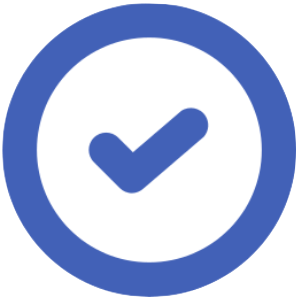 YOUTUBE VIDEO:
https://www.youtube.com/watch?v=Ta7TcxCjVg4
YOUTUBE VIDEO:
https://www.youtube.com/watch?v=Ta7TcxCjVg4
 ESL Accounting Vocabulary Lesson Description
ESL Accounting Vocabulary Lesson Description
OBJECTIVE & OVERVIEW
This ESL accounting vocabulary lesson provides activities, PDF worksheets, and digital materials designed for intermediate B1 - B2 students. In this lesson, students will:
- Be able to interpret and understand profit & loss statements
- Learn a variety of useful accounting vocabulary
- Use the present perfect to describe business trends
- Do basic accounting work to create and analyze a profit & loss statement for a business
PREVIEW & DISCUSSION
In the first section of this ESL accounting vocabulary lesson, students analyze a profit and loss statement for a business. In the activity, there is a set of accounting vocabulary words that students match to the profit & loss statement. Students will use words such as gross profit, net profit, operating expenses, cost of sales, and total revenue. This is followed by a general discussion about profit and loss statements.
VIEWING ACTIVITY
In the viewing phase of this lesson, students watch an instructional video about how to read profit and loss statements. In the video, the woman shows and describes a profit and loss statement, and the different parts it contains. There are some short questions for students, as well as a matching activity for the definitions of some of the vocabulary words. There is also a third part for students to choose the correct word the speaker uses.
DISCUSSION & GRAMMAR
In the section after watching the video, students reflect on the video and discuss a few more questions about profit and loss statements.
In the next part of the lesson, students look at graphs showing some business trends of an imaginary company called “Pet Perks”. There are some sentences describing their business trends in the present perfect tense, and students must match them to the correct graph. For example:
- Pet Perk's total revenue has slightly increased over the last quarter.
- Pet Perk's cost of sales has significantly decreased over the last quarter.
After this part, students answer some questions about the use of the present perfect when describing trends. They proceed to use this tense when describing some more graphs showing the next quarter’s business results for Pet Perks.
GET BUSINESS BACK ON TRACK!
In this communicative activity, students partner up and assume the roles of business owners at "Pet Perks." They analyze the financial aspects of the store by examining profit and loss statements for the years 2022 and 2023. Each statement contains data on in-store and online sales, as well as various expenses such as raw materials, rent, insurance, and employee wages.
In Step 1, students label and calculate totals for each category, gaining a comprehensive understanding of Pet Perks' financial performance over the specified years. Moving on to Step 2, they compare the business metrics between 2022 and 2023, using the present perfect tense to discuss trends observed in the data. Students evaluate the effectiveness of current business practices, identify areas for improvement, and develop a strategic plan to enhance business operations in 2024.
There is a second activation option for students. They carry out similar tasks as the activity described above, but in this case, they come up with their own businesses and own numbers. They can use estimates if they wish. This activity may take a bit more time, so it makes it a good candidate for a homework assignment.
BENEFITS OF USING THIS ESL ACCOUNTING VOCABULARY LESSON
Present Perfect Use: Students practice using the present perfect tense to describe business trends, helping them apply grammar in a practical context.
Accounting Vocabulary: Students engage in basic accounting work by creating and analyzing profit and loss statements for a business, getting the chance to put useful vocabulary into practice in financial and business analysis.
Understanding of Profit & Loss Statements: Students gain the ability to interpret and understand profit and loss statements, which are fundamental financial documents used in business.
 Video Description
Video Description
 Lesson Activities
Lesson Activities
Accounting, Profit & Loss Statements
Short Answers, Matching Definitions, Word Choice
Accounting, Profit & Loss Statements
Present Perfect (Describing Trends)
Profit & Loss Assessment Activation, Quiz & Review, Lesson Reflection
 Lesson Topics
Lesson Topics
Profit & Loss Statements, Accounting


 Like us on facebook
Like us on facebook
